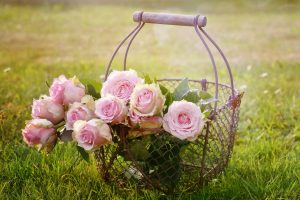There are many reasons why people choose shrubs to be a part of their garden. They add color, interest, and size as well as provide protection against wind. Moreover, they are alluring to wildlife including birds and butterflies.
Experts say that if you want to include shrubs that attract wildlife in a garden, then choose a species that is native to your region. Birds and insects like native flora, but usually ignore more exotic style shrubs. Hummingbirds and butterflies are especially picky.
If you desire to attract butterflies, then you should select plants that offer nectar and food. The nectar is for the butterflies; the food is for the caterpillars.
The United States Department of Agricultural Research Service has created a USDA Plant Hardiness Zone Map that identifies zones throughout the United States where plants grow best. The zones mentioned below refer to this map.
Some shrubs that are ideal for attracting butterflies include:
· Glossy Abelia. This type of shrub has a long flowering season and is ideal in regions of the country that are included in zones 6-10.
· Butterfly Bush. This shrub offers nectar that butterflies love. It is ideal for zone 5-9.
· Bird of Paradise. This shrub features exotic flows that attract exotic butterflies. It is ideal in regions of the country that fall into zones 9-12.
· Hibiscus. They have plenty of nectar for butterflies and thrive in zones 5-9.
· St. John’s Wart. This attracts caterpillars and does best in zones 5-9.
· Beauty Bush. This shrub offers nectar and flourishes in zones 4-8.
· Spicebush. A great example of a shrub that attracts caterpillars that does well in zones 4-8.
· Crabapple. The rotting fruit is what attracts some butterflies and caterpillars to this shrub. It fits well in regions of the country that are in zones 4-9.
· Black Berry. This shrub hosts plants that attract butterfly larvae. It thrives in zones 3-9.
· Rhododendron/Azalea. Butterflies notice when the flowers in this shrub bloom. Great for zones 3-9.
· Flowering Currant. Attracts caterpillars and offers a nectar for butterflies when the flower blossoms. Ideal for zones 4-9.
If you want birds attracted to your garden, then consider these shrubs:
· Serviceberry. This shrub carries an abundance of berries that birds seem to love. It thrives in zones 3-8.
· Chokeberry. This shrub features berries that attract birds and are also deemed edible for humans. It does best in zones 4-8.
· Dogwood. Birds flock around this shrub for its assortment of berries. It does best in zones 5-9.
· Cotoneaster. The saliciflolius it produces appears to be very popular with birds. This shrub does best in zones 4-9.
· Holly. Robins can’t get enough of the berries. Thrives in zones 3-10.
· Spicebush. Birds like the fruit it offers in the autumn. The shrub thrives in zones 4-8.
· Grapeholly. Birds like the late summer fruit offered by this shrub. It is ideal for zones 5-9.
· Cherry/Laurel. Birds and humans love the Prunus fruit this shrub offers. It is well suited for zones 3-9.
· Firethorn. This shrub offers plenty of fruit for winter birds. It thrives in zones 6-10.
· Elder. This shrub offers its fruit in the summertime. It grows well in zones 4-9.
· Snowberry. A great source of food for birds during severe weather. It grows best in zones 2-8.
· Viburnum. This shrub produces fruit that humans and birds love. It is best suited for zones 3-9.
If it’s bees and hummingbirds you want to see visiting your garden, then consider adding one of these shrubs.
• Butterfly Bush. Also mentioned as an ideal bush to attract butterflies, bees and sometimes hummingbirds are also attracted to the nectar. This shrub does best in regions in zones 5-9.
• Cotoneaster. Bees can’t get enough of what this shrub offers. It thrives in zones 4-9.
• Escallonia. This bush is simply a bee magnet. Ideal for zones 8-11.
• Holly. Its allurer entices bees during the short flowering season. Best in zones 3-10.
• Honeysuckle. Hummingbirds love these shrubs. Best in zones 5-9.







